We were lucky to catch up with Manuel Muñoz Gomez Gallardo recently and have shared our conversation below.
Hi Manuel , thanks for joining us today. Can you talk to us about a project that’s meant a lot to you?
Hello and thank you! To answer your question, I believe my work in the Cananea mine area in general has been incredibly meaningful, because it’s been more than just about creating art. It’s been about giving the land a voice and an identity. As I work from scrap metal to make my pieces, I feel a connection to the history of this place. My goal has always been to change how people saw things, and turning industrial remains into symbols of strength and creativity.
One sculpture that holds a particularly special place in my heart is the Light Vault. This piece stands as a testament to the land’s resilience, capturing the interplay between light and shadow that defines the desert’s character. The sculpture becomes a canvas for the sun’s journey across the sky, reminding us of the passage of time and the ever-changing nature of our surroundings.
Most of my sculptures, like the ITSC Bridge, are intended to be more than just objects; they’re links between the past and present, between the earth and the sky. Graduates pose here, and local events revolve around these pieces. It’s not just about art; it’s about the shared experiences and memories. Knowing that the Parque Tamosura and the sculptures within the project serve as the chosen backdrop for people to mark the most significant moments in their lives, from capturing quinceañera portraits to embracing newlyweds is a sign of re-appropriation and the best possible compliment because after conceiving the pieces, I can see them take a life of their own and having a positive impact in the life of others.
In a fast-paced world, I like to find beauty in slowing down and honoring the land’s stories. Cananea’s history is one of struggle and triumph, blending cultures and influences. Through my sculptures, I want people to feel that history, to feel a part of this place. It’s not just about what I create; it’s how it brings people together, shapes communities, and helps us see ourselves in different contexts and perspectives.
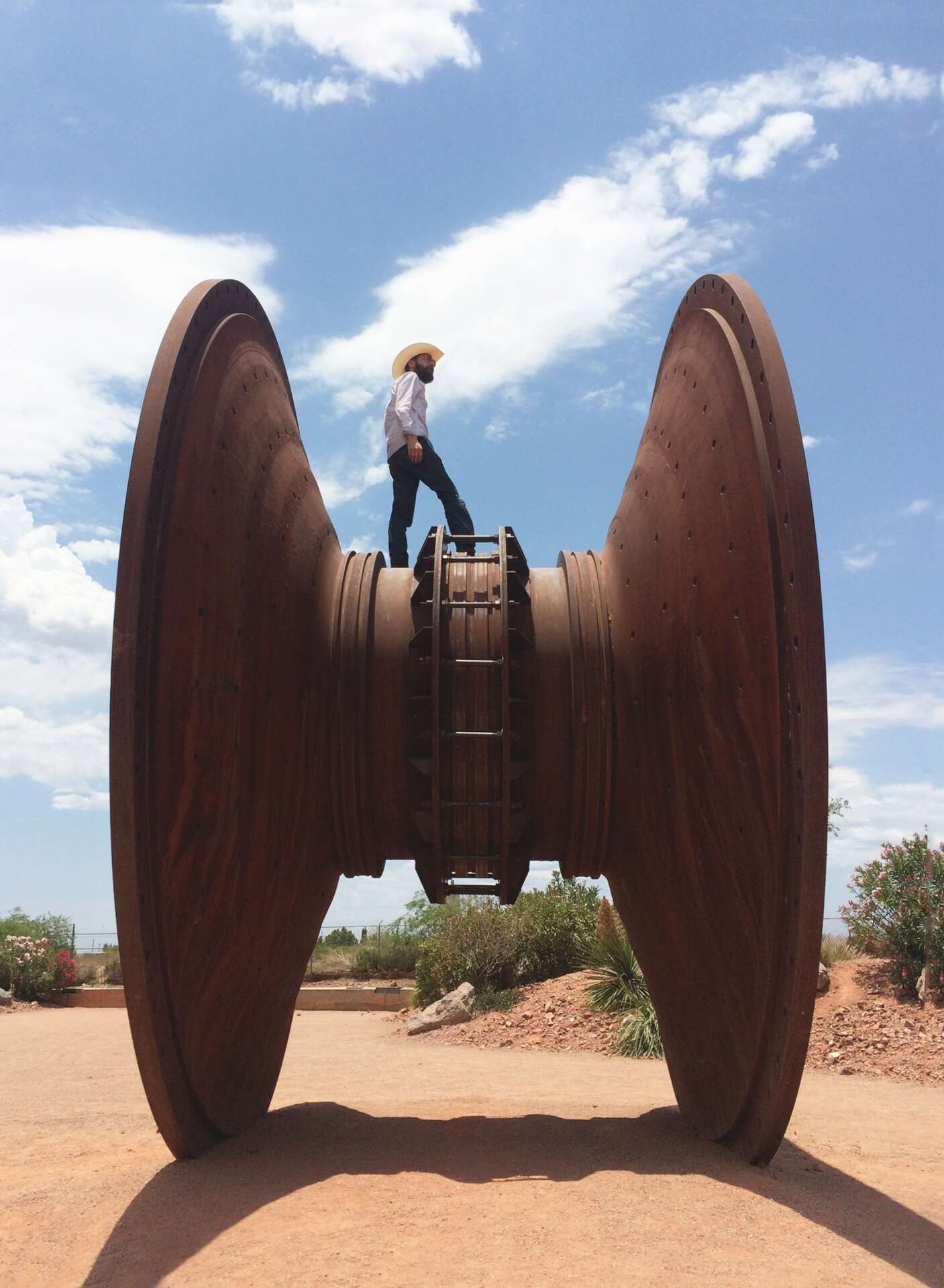
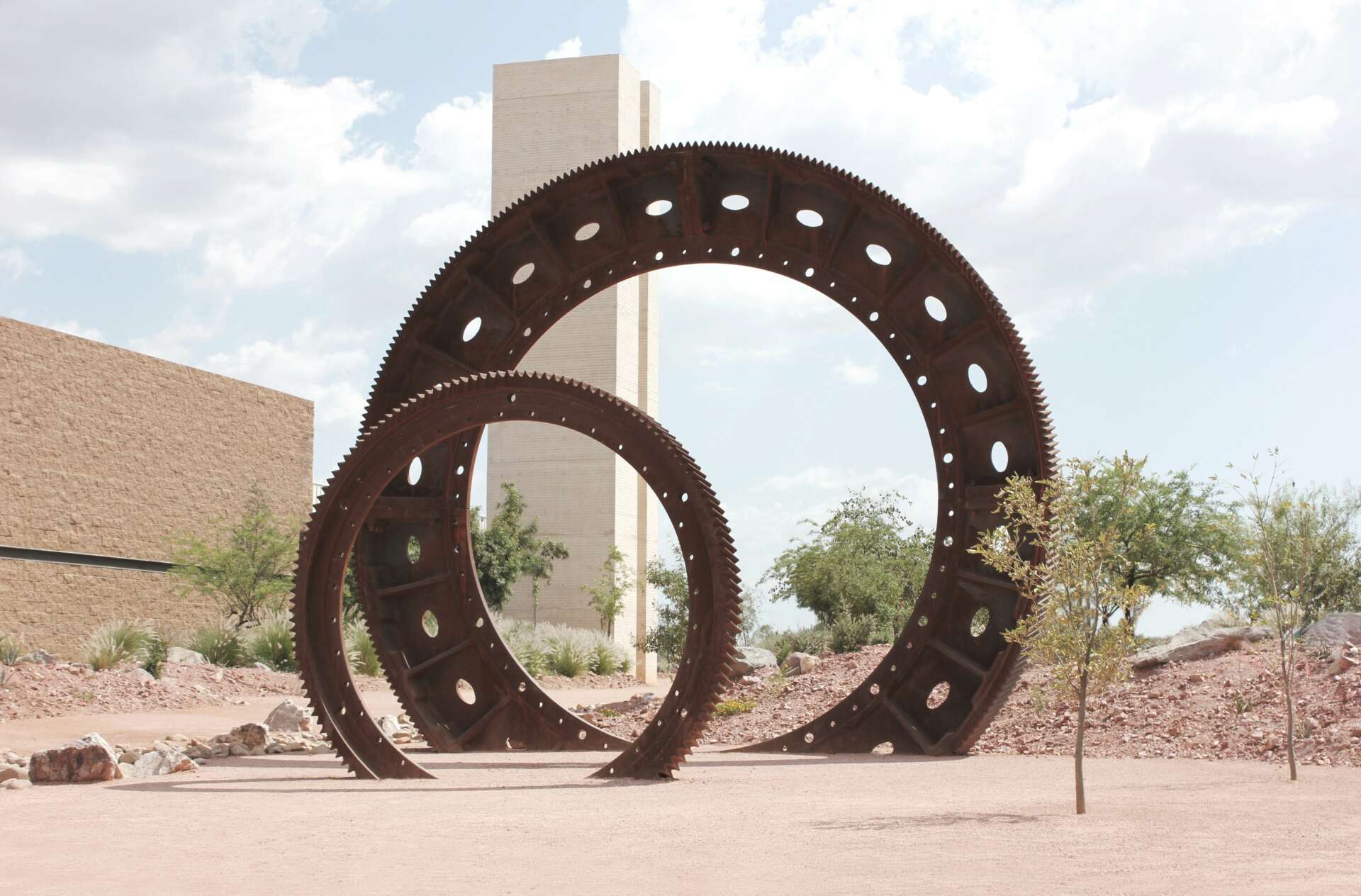
Manuel , before we move on to more of these sorts of questions, can you take some time to bring our readers up to speed on you and what you do?
Of course, I’m a sculptor based in Mexico City, although I defiitely didn’t consciously choose to enter the Art industry; it was more of an innate pull. From the start, it was clear that art was my sole path. As a child, my skills and interests were singularly directed towards craft and creation. There was an unmistakable sensitivity within me.
Born in Mexico City in 1982, I grew up amidst a family of artists, architects, and designers, and art soon became my main pursuit. After my studies at Chelsea College of Arts and Design in London and becoming the first Mexican member of the Royal Society of Sculptors, I faced challenges that steered me towards transforming industrial debris into monumental works of art.
My goal has always been to craft timeless pieces, creations that could seamlessly belong to the 1940s or materialize three decades from now and still resonate. A pivotal moment arrived when a friend commented on my family’s profound affinity for the abstract. The modernist architect legacy of my grandfather and my mother’s transition from figurative to beautiful abstract paintings illuminated the significance of abstraction. It’s an avenue that opens up new horizons, interpretations, and thought patterns – letting the imagination run wild.
Returning to Mexico City after residing in Great Britain and Sonora for extended periods, I’m currently immersed in an ongoing project encompassing the regions of Cananea, Nacozari and surrounding areas. For the past twelve years, I’ve been collaborating with a huge mining company and a group of highly gifted architects and engineers in the Sonoran region. My journey has revolved around harnessing this massive infrastructure to bring forth environmentally conscious pieces, repurposing industrial remnants to shape monumental art with minimal environmental impact.
My work focuses on the intricate challenge of infusing disconnected spaces with deep meaning. Despite the industry’s primary focus of extracting copper from the earth, my commitment lies in magnifying and elevating these creations. Which has entailed a persistent effort of convincing and enlightening stakeholders about the many social advantages and joys that projects like these can bring to the area. As well as becoming trailblazers for new forms of creative collaboration by leading by example, and hopefully inspiring other companies and even governmental bodies to embark on similar projects.
What distinguishes me is my collaboration with an industry that may initially seem at odds with artistic expression. Yet, within that dialogue lies a fascination for human ingenuity that bridges the perceived gap. Now years of dedicated work have culminated into a very rewarding project – a central piece that’s part of a massive land restoration and tailings dam remediation effort. Fifty-five towering monoliths emerging, forming an asymmetric circular area around fertile soil. Crafted from tailings, earth and other elements, each monolith pays homage to historical construction techniques. The circular form establishes a profound link to the cyclic cosmos and our fleeting existence. The irregular arrangement of these monoliths creates distinctive spaces, inviting tactile exploration and introspection. The interplay with the surrounding nature prompts contemplation about the fragility of human life and our transient presence.

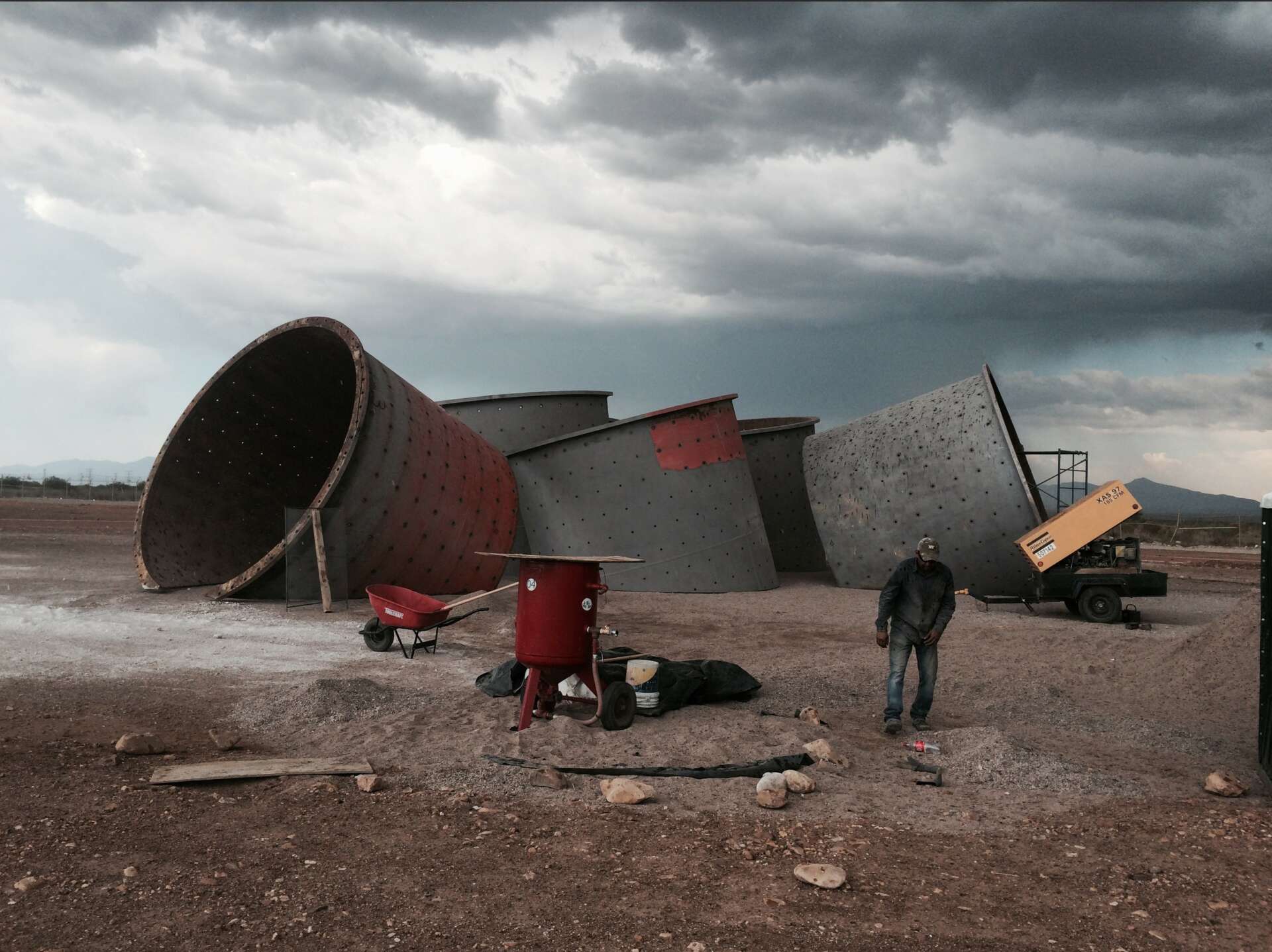
Let’s talk about resilience next – do you have a story you can share with us?
Sure, I can still recall the early days, when my initial role involved gathering and selecting scrap materials that others would use for sculpting. Ironically, I wasn’t initially assigned to craft sculptures myself. My task was to salvage materials, which were also earmarked for recycling by companies purchasing the scrap. I remember racing against time to rescue as many pieces as possible. Sculpture was foreign to them; they envisioned tin men. I remember a man picking up a rusty screw, suggesting it could become the nose of a Pinocchio puppet, while I fought to rescue an 85 tonne gear, that would be the cornerstone of my first creation.
I went to Cananea with huge ambition, and had to move oceans and mountains to be able to bring my visions to life. Collaborating with the mining company demanded enormous effort. Venturing into a remote, isolated location, far from the urban cultures of Mexico City and London, was a challenge in itself. It was the senior engineer who invited me to the project and his genuine appreciation for creativity and the arts that paved my way. His guidance and unwavering trust became the solid foundation upon which I built my accomplishments.
Many individuals have joined me on this journey, contributing a diverse range of skills—welders, heavy machinery operators, carpenters, and engineers. However, the biggest challenge was holding my ground and persuading them to believe in something they couldn’t yet perceive or envision. The region remains deeply rural, with resistance to change ingrained in its fabric.
My unwavering determination eventually earned the trust of the company and the local community. Now, when I propose a sculpture, they anticipate something exceptionally intricate and monumental.
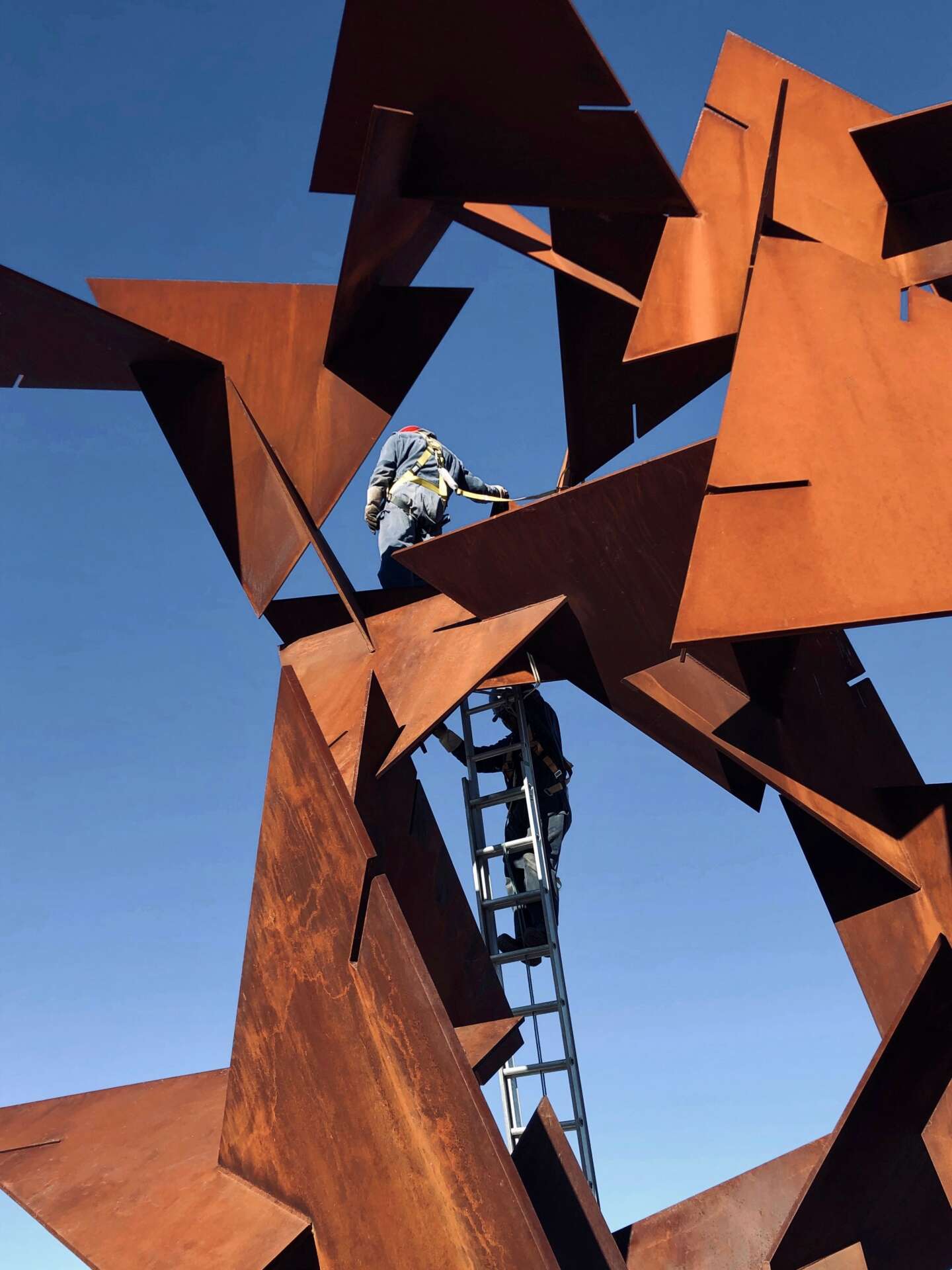

In your view, what can society to do to best support artists, creatives and a thriving creative ecosystem?
In my perspective, fostering a thriving creative ecosystem involves a shared commitment from both society and its institutions. Firstly, recognizing the intrinsic value of art and creativity is paramount. This recognition extends beyond the final masterpiece to the process itself—the countless hours of contemplation, experimentation, and dedication that artists pour into their work. It’s about understanding that creativity is a dynamic force that fuels innovation across all sectors.
Education is another key pillar. By integrating art and creative thinking into the school’s curriculum from an early age, we empower future generations with a broader perspective and a greater capacity for imaginative problem-solving. Encouraging young minds to explore their creative inclinations ensures a diverse pool of talents for the future. Moreover, supporting artists involves creating accessible spaces for their work to thrive. Galleries, public installations, and community events serve as bridges between artists and the wider public. Embracing art not only enhances our physical surroundings but also cultivates a deeper connection among people, creating a more vibrant and compassionate society.
Financial support is undeniably crucial. Grants, fellowships, and residencies can provide artists with the necessary resources to fully dedicate themselves to their craft without being overly burdened by financial constraints. This support acknowledges that art is not just a hobby but a profession that deserves respect and sustenance. Dialogue and collaboration therefore should be encouraged. Artists, creators, and institutions should engage in meaningful conversations, fostering an environment where different perspectives converge and lead to the generation of groundbreaking ideas.
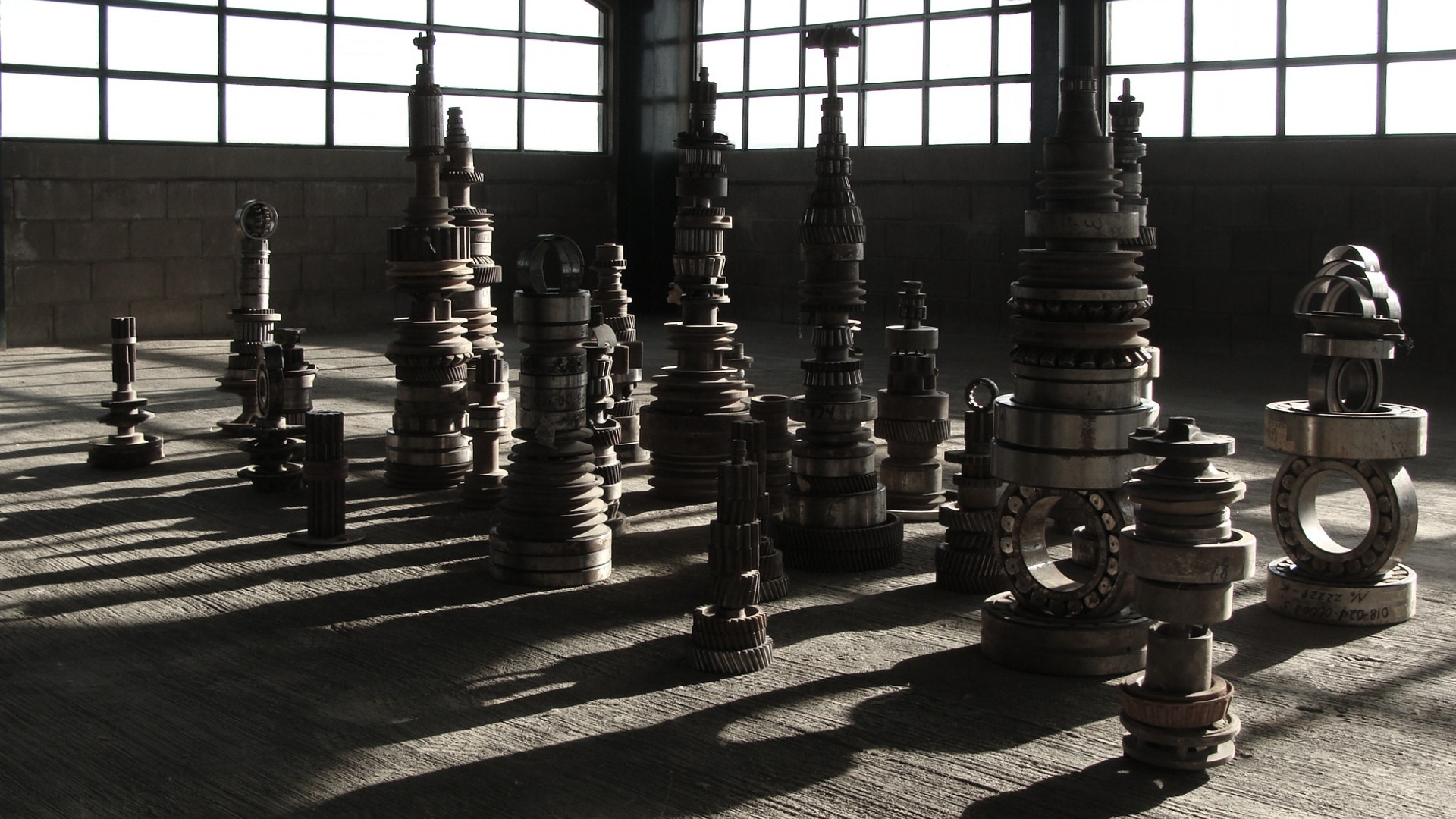
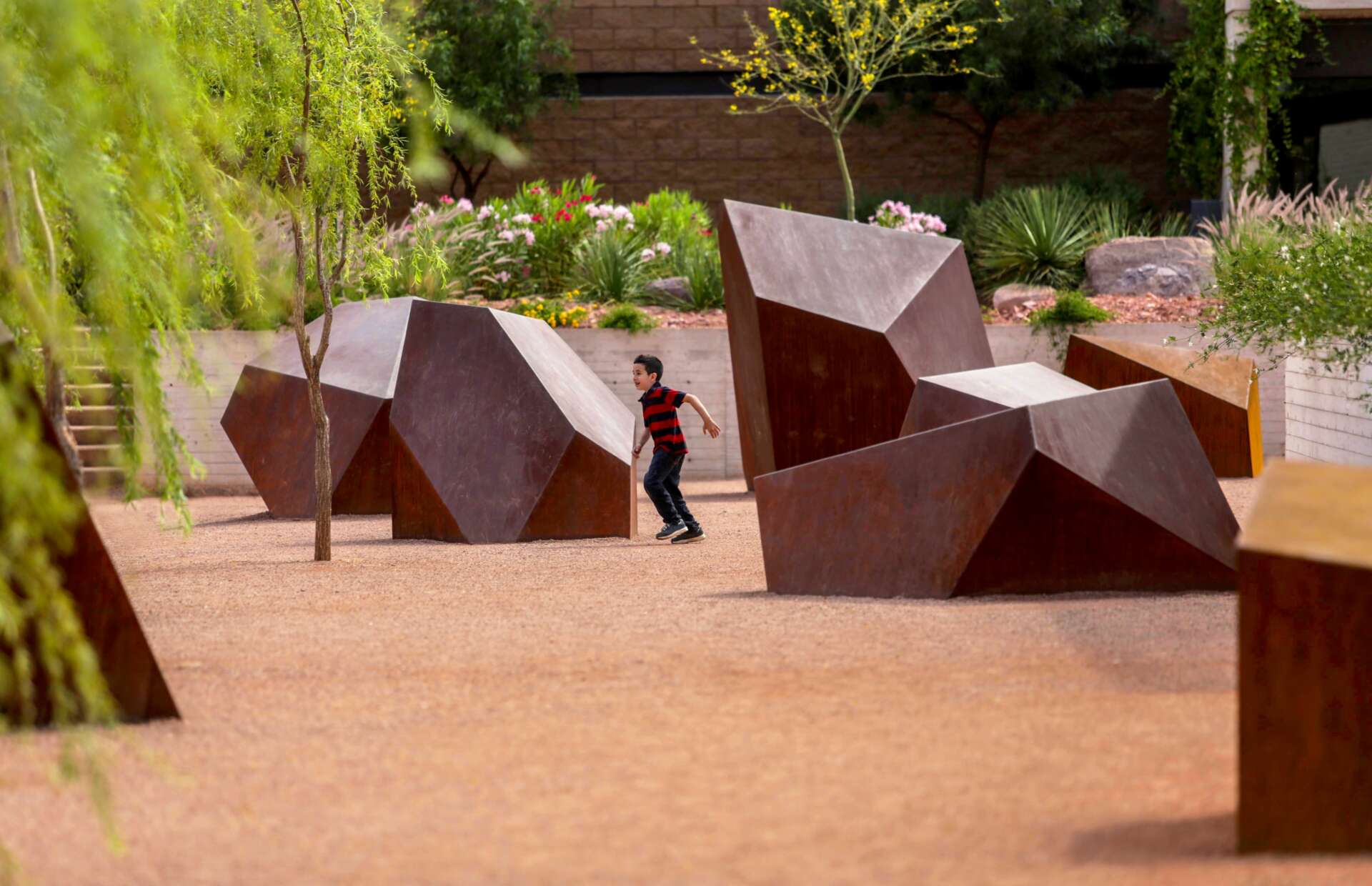
Contact Info:
- Website: https://manuelmunozgg.com/
- Instagram: https://www.instagram.com/m_m_g_g/
- Other: https://vimeo.com/364555114


